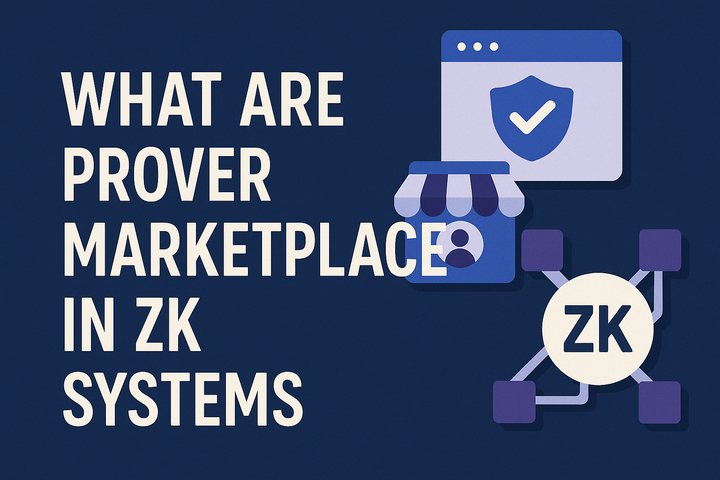Crypto Week, Sparks Market Mania

How President Trump’s GENIUS Act, plus Clarity and Anti‑CBDC bills, ignited a $4 trillion rally, and what it means for crypto’s future
Introduction
In a whirlwind seven‑day period, dubbed “Crypto Week,” markets roared back to life. Headlines flashed that former President Trump had signed the GENIUS Act, while Congress moved forward on the Clarity Bill and an Anti‑CBDC Act. Together, these three regulatory moves ignited a staggering $4 trillion surge in the combined market capitalization of digital assets.
What happened? How did a flurry of legislation—often framed as pro‑crypto—trigger one of the biggest rallies in recent memory? And what are the deeper implications for investors, developers, and policymakers? In this 1,000‑word deep dive, we’ll unpack:
- Crypto Week timeline: Key events and market reactions
- Regulatory breakthroughs: What the GENIUS, Clarity, and Anti‑CBDC bills really do
- Investor sentiment: The psychological tinder that fueled the rally
- Long‑term outlook: Will this momentum stick, or is it a fleeting fireworks show?
Whether you’re building DeFi apps, managing an institutional portfolio, or simply watching from the sidelines, the lessons from Crypto Week could shape the next wave of Web3 growth.
1. Crypto Week Timeline: From Bill Signing to Market Milestones
- Day 1 – GENIUS Act Signed
President Trump’s announcement that he had signed the Generating Essential New Innovations in USilicon (GENIUS) Act hit headlines. The Act officially classifies most tokens as “digital commodities,” clarifies tax treatment, and sets guardrails for self-custody wallets—effectively offering a green light to retail and institutional participants who’d long feared regulatory crackdowns. - Day 2–3 – Clarity Bill Advances
The Digital Asset Clarity Act passed committee votes in both the House and Senate. This bill sharpens definitions around securities vs. commodities, gives the CFTC exclusive jurisdiction over crypto assets not deemed securities, and mandates a one‑year window for exchanges to register. - Day 4 – Anti‑CBDC Act Introduced
Democrats and Republicans co‑sponsored the Preventive Anti‑CBDC Deployment Act, which blocks any U.S. central bank from issuing a fully digital dollar without explicit Congressional approval—quelling fears that a Fed‑issued CBDC might erode financial privacy or hasten centralization. - Day 5–7 – Market Mania
As these measures stacked up, Bitcoin blasted past $75,000, Ethereum reclaimed $5,500, and dozens of altcoins doubled or tripled. Total crypto market cap soared from $2.8 trillion to over $6.8 trillion in less than a week—a $4 trillion leap that stunned traders and analysts alike.
2. Regulatory Breakthroughs: What’s Inside the Three Bills
A. The GENIUS Act: Legal Certainty for Digital Commodities
- Token Classification: Draws a bright line between tokens deemed commodities (governed by CFTC) vs. securities (under SEC). Most utility and governance tokens fall into the commodity camp, removing regulatory gray areas.
- Tax Simplification: Introduces a new category for “small‑scale traders,” exempting accounts under $20,000 annual gains from complex reporting, while standardizing 1099‑like forms for larger traders.
- Self‑Custody Protections: Cracks down on forced key‑escrow schemes; makes non‑custodial wallets legally recognized, preventing third parties from compelling private key surrender without due process.
B. Digital Asset Clarity Act: Strengthening Market Infrastructure
- Regulatory Handoff: Explicitly gives the CFTC authority over all crypto‑commodity exchanges, while the SEC retains control of token offerings judged as securities.
- Exchange Registration: Exchange operators get a 12‑month window to register as DCMs (Designated Commodity Markets) or face civil fines.
- Consumer Protections: Mandates proof‑of‑reserves audits, enforceable code standards, and clearer dispute‑resolution processes for on‑chain transactions.
C. Preventive Anti‑CBDC Deployment Act: Defending Financial Privacy
- CBDC Moratorium: Bans Federal Reserve or Treasury from issuing any retail or wholesale CBDC until Congress passes a standalone CBDC bill.
- Digital Dollar Pilot Limits: Allows only narrow, limited pilots (e.g., interbank settlements), preventing mass distribution to consumers without a robust privacy framework.
- Privacy Guardrails: Requires any future CBDC design to include irrevocable privacy protections—mirroring features like anonymous UTXO‑style transactions.
Together, these bills promise a world where tokens are legally valid, markets are transparent, and digital‑dollar schemes can’t roll out overnight. For many investors, that legal certainty was the spark they’d been waiting for.
3. Investor Sentiment: Riding the Wave of Certainty and Hype
Regulatory clarity often acts as a confidence multiplier. Here’s how sentiment shifted during Crypto Week:
- Fear to FOMO: After years of “regulation by enforcement,” traders feared surprise crackdowns and bank freezes. The GENIUS Act’s clear classifications flipped that fear into “fear of missing out.”
- Media Amplification: Every major outlet—from The Wall Street Journal to CNBC—covered the bills favorably, reinforcing the narrative that Washington had finally embraced crypto. This mainstream validation drew fresh capital from hedge funds and 401(k) managers.
- Social Proof: On‑chain metrics showed massive new addresses onboarding. Twitter, Discord, and Telegram buzzed with retail users posting “new all‑time highs” screenshots, luring more traders to jump in.
- Fund Flows: DeFi protocols saw record TVL (total value locked), while institutional-grade custody providers reported large whitelisting requests for prime brokerage services. Even corporate treasuries began circling centralized exchange offerings.
The psychological effect was two‑fold: existing holders doubled down, and fence‑sitters poured in, driving prices higher in a classic positive feedback loop.
4. Long‑Term Outlook: Sustainable Growth or Short‑Lived Surge?
A $4 trillion rally is dizzying—but markets often give back gains as quickly as they’re made. Here’s what to watch:
1. Implementation Timelines
- Exchange Registrations under the Clarity Act must occur within 12 months. Delays or pushback from exchanges could dampen enthusiasm if deadlines get pushed.
- Tax Reporting Roll‑Out of the GENIUS Act’s new forms will begin early 2026. Complexity in rollout risks short‑term confusion among retail traders.
2. Lobbying & Legal Challenges
Big banks and legacy financial firms may challenge portions of the Anti‑CBDC Act that lock out private-sector stablecoins or tokenized commercial bank money. Watch for court battles that could slow progress.
3. Global Competitive Dynamics
If the U.S. secures clear pro‑crypto rules, it may attract projects and capital away from other jurisdictions (e.g., EU’s MiCA). That could deepen on‑shore infrastructure—but also spark “crypto nationalism” elsewhere.
4. Market Maturity Signals
- Volatility Trends: A sustained drop in 30‑day rolling volatility would signal maturing markets.
- Institutional Products: The arrival of regulated crypto ETFs, tokenized commodities, and index funds will test whether demand holds at these new price levels.
If the rally rests on real structural improvements and genuine demand, we may see a multi‑quarter bull run. If it’s mostly hype around legal texts, a pullback could follow when initial euphoria fades.
Conclusion
“Crypto Week” taught us an old lesson in a new key: regulatory clarity begets confidence. By signing the GENIUS Act, green‑lighting the Clarity Bill, and halting Fed‑driven CBDCs, Washington sparked a rare moment of bipartisan support—enough to power a $4 trillion market surge.
Yet, tomorrow’s winners will be those who:
- Build compliant platforms that thrive under the new rules
- Educate users on evolving tax and custody requirements
- Innovate around tokenized assets—from commodities to equities—now that the legal path is clearer
For investors, the rally underscores that crypto is not just a speculative playground but an emerging asset class with a seat at the table. For builders, it’s a call to double down on real‑world use cases, knowing the regulatory wind is finally at their backs.
Whether this mania marks the dawn of a lasting bull market or a one‑off fireworks show remains to be seen. But one thing is clear: when the rules get written, the money follows. And for the first time in years, those rules look remarkably friendly to crypto
Internal Mitosis Links & Glossary References
- Bitcoin
- Blockchain
- Cryptocurrency
- Mitosis Core: https://university.mitosis.org/mitosis-core
- Governance: https://university.mitosis.org/governance
- Glossary: https://university.mitosis.org/glossary/
- Ecosystem Connections: https://university.mitosis.org/ecosystem-connections



Comments ()